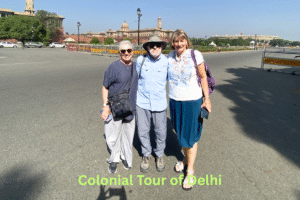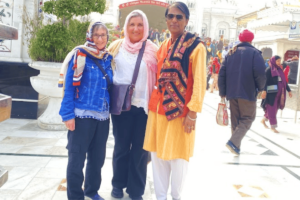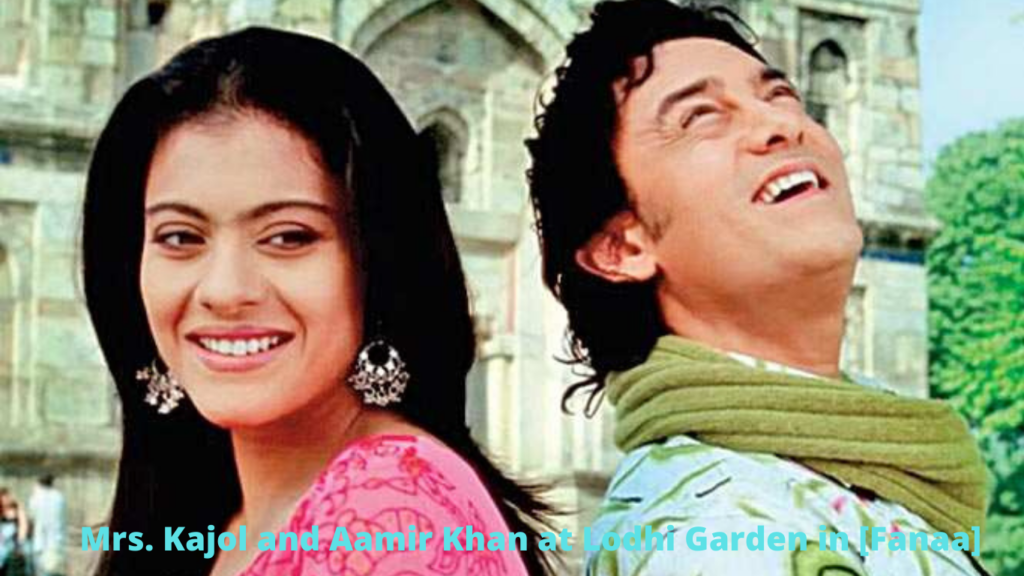
Red Fort Tour Guide: History, Timings, Ticket Price & What to See in Red Fort Delhi: The majestic Red Fort, or Lal Qila, is not just a monument—it’s a journey through India’s rich history, Mughal grandeur, and Delhi’s vibrant soul. If you are planning a visit to Delhi, having a knowledgeable Red Fort tour guide can transform your experience, bringing alive stories of emperors, courtiers, and the grandeur of Shahjahanabad. From the towering red sandstone walls to the serene gardens, the fort tells tales of power, intrigue, and artistry that span centuries.
Whether you are a history enthusiast, a photography lover, or a traveler seeking cultural immersion, this comprehensive guide will help you explore Red Fort Delhi, understand its history, architecture, and provide all the practical information like ticket prices, timings, and nearest metro access.
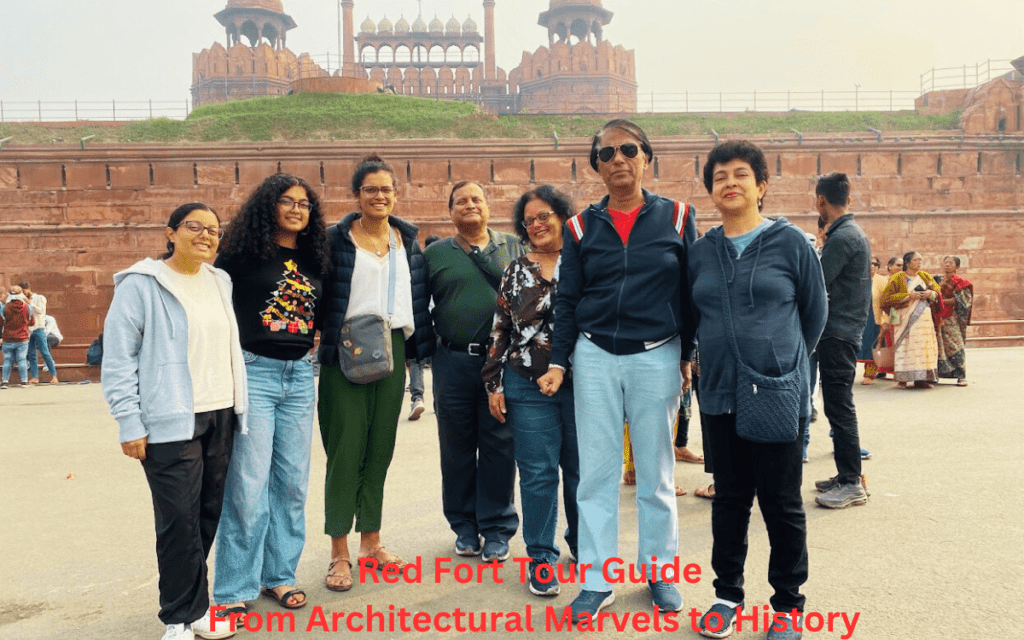
Red Fort Delhi History A Walk with Tour Guide
Built in 1648 by the Mughal Emperor Shah Jahan, who also commissioned the Taj Mahal, the Red Fort was designed as the centerpiece of his new capital, Shahjahanabad. The fort stood not only as a royal residence but also as a political and cultural heart of Mughal India.
Your Red Fort tour guide will share how this architectural wonder once hosted royal processions, music performances, and meetings of the empire’s most brilliant minds. From the gilded ceilings of Diwan-i-Khas to the imperial court of Diwan-i-Aam, every arch whispers stories of ambition, art, and power.
After the fall of the Mughal Empire, the British took over the fort in 1857, marking the end of an era. Today, the Red Fort stands as a powerful symbol of India’s independence — the very place where the Prime Minister hoists the tricolor flag every year on Independence Day.
See 18th Century: Old Images of Red Fort Lal Qila
Red Fort with Guide for The Architectural Brilliance
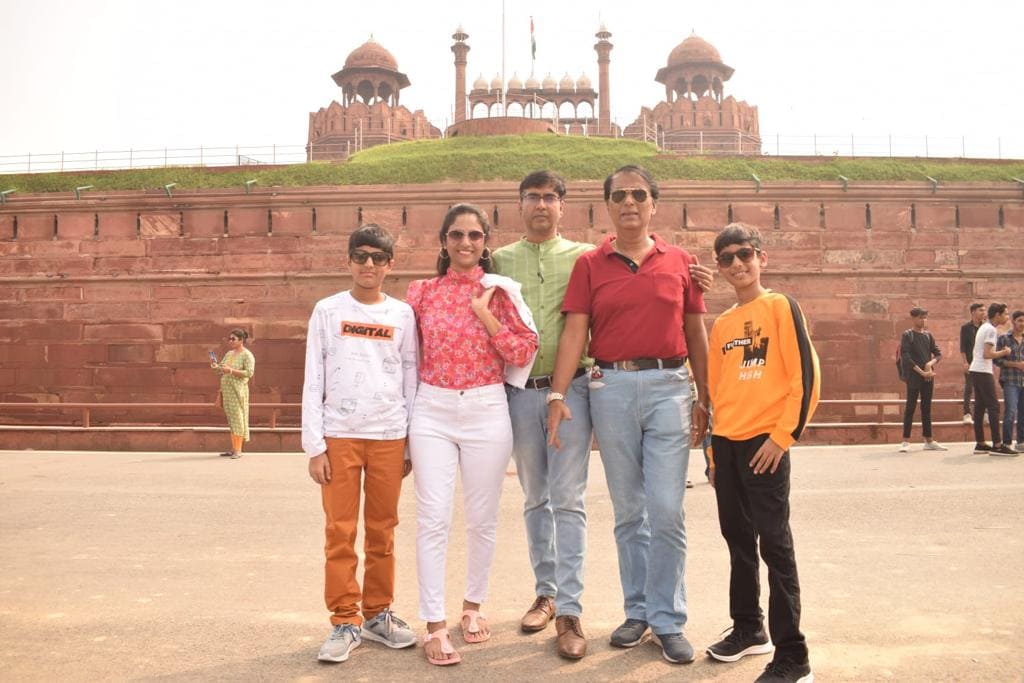
The Red Fort architecture is a blend of Persian, Timurid, and Indian styles, characterized by:
- Red sandstone walls stretching over 2 km, giving the fort its name.
- Massive gates like Lahore Gate (main entrance) and Delhi Gate.
- Diwan-i-Aam (Hall of Public Audience) where emperors addressed the citizens.
- Diwan-i-Khas (Hall of Private Audience) adorned with delicate marble and inlay work.
- Moti Masjid (Pearl Mosque) – a private place of worship for the emperor.
- Mughal gardens with fountains, reflecting pools, and symmetrical layouts.
A Red Fort tour guide can provide detailed insights into the symbolism behind each architectural element, explaining how every dome, courtyard, and water channel had a purpose in imperial life.
You May Like To Read A Story: 1947-Old Delhi Walking Tour: A Love Story
Exploring the Red Fort Complex with Your Red Fort Tour Guide – What to See Inside Red Fort Delhi
Stepping into the Red Fort Delhi feels like walking through the pages of history. Every gate, courtyard, and arch whispers stories of the Mughal Empire — of emperors and artists, soldiers and saints. With an experienced Red Fort tour guide, these stones come alive, turning your visit into a journey through centuries of power, art, and faith.
1. Lahore Gate – The Gateway to Mughal Glory
The Lahore Gate is not just the main entrance; it’s a symbol of Delhi’s soul. Standing tall with its mighty red sandstone walls, it welcomes visitors as it once welcomed emperors.
Your Red Fort tour guide will narrate fascinating stories — how Emperor Shah Jahan first entered through this gate in royal splendor, and later, how the British forces stormed through it during the Revolt of 1857. As you climb its steps, imagine the echo of horse hooves, soldiers’ cries, and the fluttering banners of the Mughal army.

Diwan-i-Aam (Hall of Public Audience) – Where Emperors Met the People
The Diwan-i-Aam was the heart of the emperor’s connection with his people. This majestic hall, open to the sky and surrounded by carved arches, was where the emperor held public court.
With your Red Fort guide, picture Emperor Shah Jahan seated on his jewel-encrusted Peacock Throne, listening to petitions from citizens and nobles alike. The air must have shimmered with gold and silk, the fragrance of attar, and the hum of royal music.
The Hall of Public Audience showcases Mughal ideals of justice and dignity — a place where the ruler was both emperor and caretaker of his people.
Diwan-i-Khas (Hall of Private Audience) – The Jewel of Red Fort Delhi
Perhaps the most beautiful part of Red Fort, the Diwan-i-Khas was reserved for royal guests and state meetings. The walls here sparkle with marble inlay work, semi-precious stones, and Persian calligraphy that reads: “If there is a paradise on earth, it is this, it is this, it is this.”
A Red Fort tour guide will reveal the delicate artistry behind the carvings — how Mughal craftsmen blended marble, jade, and lapis lazuli to create masterpieces. Imagine ambassadors from Persia, traders from Turkey, and princes from India standing before Shah Jahan in this glittering hall of diplomacy.
Moti Masjid (Pearl Mosque) – The Emperor’s Silent Prayer
Tucked within the fort’s walls lies the serene Moti Masjid, built by Aurangzeb, Shah Jahan’s son. Crafted entirely from white marble, it glows softly under sunlight, like a pearl in the heart of red sandstone.
Your Red Fort tour guide may tell you how Aurangzeb, known for his piety, built this mosque for private prayers. Even today, it exudes tranquility — a contrast to the grand public spaces of the fort. The mosque’s quiet beauty, symmetry, and subtle detailing are a testament to Mughal devotion and artistry.
The Royal Bazaars and Fatehpuri Masjid – Echoes of Old Delhi Life
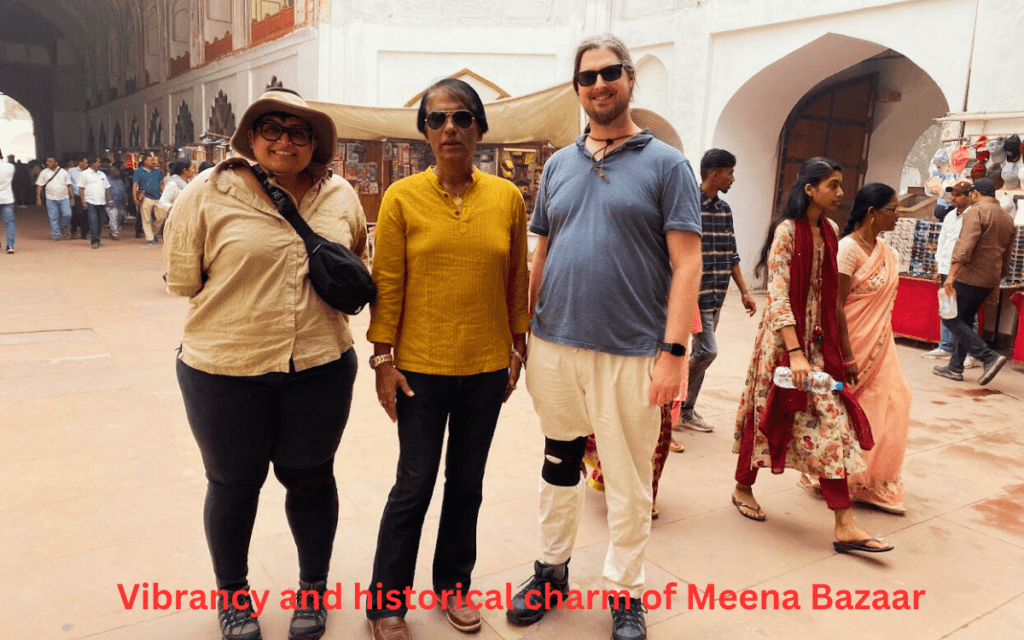
Beyond the royal courts, the Red Fort also housed bustling bazaars where artisans sold silks, perfumes, and ornaments. A guided Red Fort heritage tour often includes stories of the markets’ lively trade and the Fatehpuri Masjid, a small mosque that was part of daily life inside the fort.
Here, the fort feels less like a monument and more like a living city, with laughter, haggling, and music in the air.
Mughal Gardens – The Paradise Within Red Fort

No Mughal monument was complete without a garden inspired by the idea of paradise. The Mughal Gardens inside Red Fort are a masterpiece of symmetry and serenity. Flowing water channels, fountains, and flowerbeds symbolized purity and eternal peace.
Your Red Fort tour guide can explain how these gardens followed the Persian concept of Charbagh (four gardens), representing the rivers of paradise. Stroll here as the emperors once did — among fountains, chirping birds, and whispering breeze.
As you walk through, imagine royal processions, poets reciting verses, and Sufi musicians playing in the background. The gardens today remain a peaceful escape for travelers seeking beauty and reflection.
Red Fort Timings & Entry Ticket Information
- Opening Hours: 9:30 AM – 4:30 PM daily
- Entry Fee: ₹35 for Indians, ₹500 for foreign tourists
- Photography Charges: Free for personal cameras; professional photography may require additional permission.
- Best Time to Visit: October to March for pleasant weather and stunning photography
With a Red Fort tour guide, you can efficiently explore the main attractions within 2–3 hours, making it ideal for both short visits and in-depth historical tours.
How to Reach Red Fort – Metro, Road & Tips

By Metro
- The nearest station is Chandni Chowk Metro Station on the Yellow Line, just a 5–10 minute walk from the fort.
- Alternatively, Lal Qila Metro Station provides direct access to the main gate.
By Road
- Easily reachable by taxi, Uber, or Ola.
- Parking is available nearby, though crowded on weekends.
Travel Tips
- Carry a water bottle and wear comfortable shoes for walking the large complex.
- Visiting with a Red Fort tour guide enhances your experience, as they provide historical context, anecdotes, and architectural insights.
- Consider pairing your visit with Chandni Chowk street food for a complete Old Delhi experience.
Red Fort Sound and Light Show
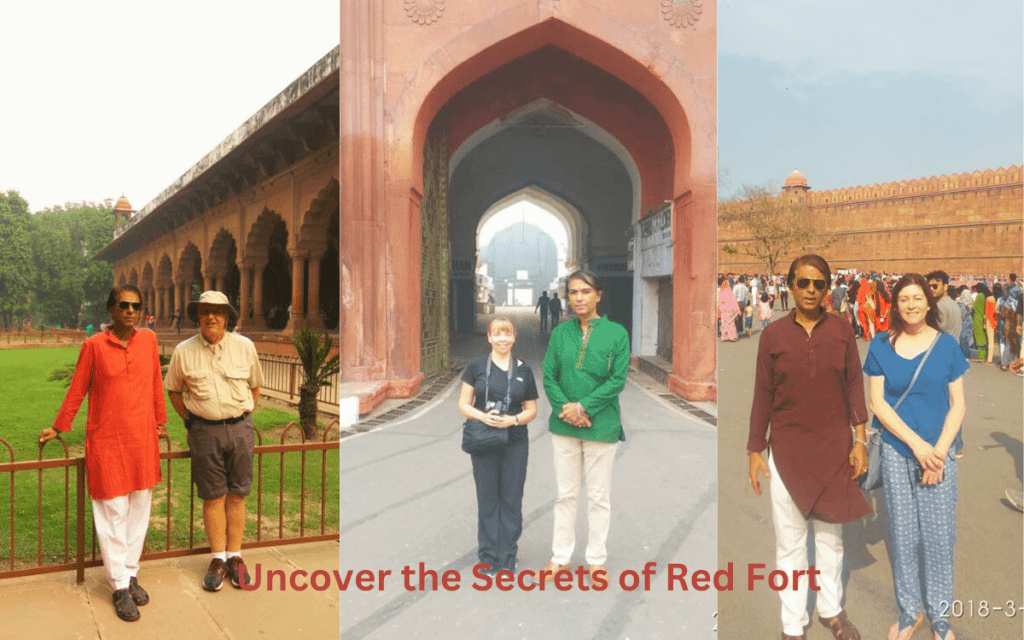
The Red Fort Sound and Light Show is a magical evening experience where the history of the fort comes alive with lights and narration. Your tour guide can give you an insider’s tip on the best spots for viewing the show and narrating stories of the Mughal emperors, 1857 rebellion, and India’s independence. Light and Sound show please check : 01123277705
Why Every Traveler Needs a Red Fort Tour Guide
A visit to Red Fort can be awe-inspiring, but a Red Fort tour guide adds depth, storytelling, and hidden secrets. They narrate tales of royal romance, political intrigue, and architectural genius. With a guide, you don’t just see the Red Fort — you feel it.
Whether you’re exploring the Lahore Gate, standing in the Diwan-i-Khas, or breathing in the fragrance of Mughal gardens, a local guide helps you connect emotionally with Delhi’s royal past.
Explore Delhi Like a Local: Best Delhi Tour Guide for Heritage Walks & City Adventures
Hiring a Red Fort tour guide is highly recommended because:
- They bring historical events to life with stories of Mughal emperors and British colonization.
- They help you navigate the vast complex efficiently, ensuring you don’t miss any highlights.
- They explain architectural details, such as the symbolism in gates, domes, and water channels.
- For photography enthusiasts, guides suggest the best angles and lighting.
A professional guide turns a visit into a memorable educational experience, giving context to every corner, courtyard, and garden.
Nearby Attractions to Include in Your Delhi Heritage Tour
Jama Masjid: Explore one of India’s largest mosques, just a short walk from the Red Fort.
Chandni Chowk: Indulge in Delhi’s street food and markets, a sensory overload of taste, color, and culture.
Raj Ghat: Pay homage to Mahatma Gandhi at his memorial.
Tips for a Perfect Red Fort Experience
Listen carefully to your guide for hidden gems, like lesser-known mosques, fountains, and secret corridors.
Arrive early to avoid crowds, especially near the Lahore Gate.
Carry a map or app for orientation; your guide will explain the layout.
Pair your visit with Chandni Chowk for local food like jalebi, parathas, and chaat.
Wear comfortable clothing, as you’ll be walking a lot inside the fort.
FAQs – Red Fort Delhi Tour Guide
Q1: How long does a Red Fort tour take?
- Typically 2–3 hours, depending on whether you include gardens and inner markets.
Q2: Can I visit without a guide?
- Yes, but a tour guide enriches the experience, sharing stories and details you may miss.
Q3: Is photography allowed?
- Personal cameras are allowed; professional shoots may require permission.
Q4: What is the best time to visit?
- October to March offers pleasant weather and avoids the Delhi heat.
Q5: Is it child-friendly?
Yes, children enjoy the open gardens, massive gates, and stories of emperors and battles.



